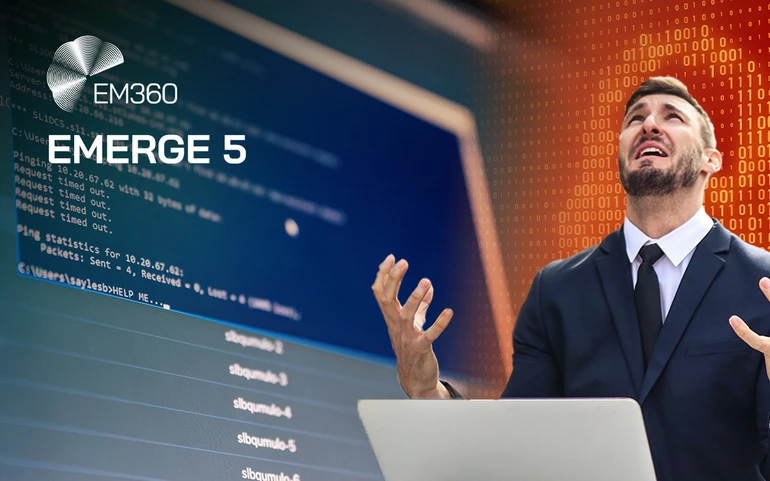
Article contributed by Leyton Jefferies, Head of Cyber Security Services, CSI Ltd
While you might think your security is top-notch, are you sure your Managed Service Provider's (MSP) is too? In a recent advisory note, the 'Five Eyes' intelligence alliance (UK, Australia, Canada, New Zealand and the United States) reported an increase in hostile cyber activities targeting MSPs.
They urged MSPs to harden their cyber security practices. The report highlights that downstream risks to clients are likely to occur when an MSP falls victim to cyber vulnerabilities, which could result in an eye-opening digital supply chain attack.
MSPs are vulnerable as hackers use the logic that if they attack, and successfully gain access to an MSP, they will get access to dozens or hundreds of customers. A high-profile supply chain cyberattack involved SolarWinds, a provider of IT management software back in December 2020.
The attack involved malware, which spread around all of SolarWinds’ customers via their normal software update. Customers targeted included US Government agencies. A ransomware attack on US MSP Kaseya last year also affected up to 1,500 of its customers. And this year, targeting MSPs resulted in a cyberattack that caused the outage of the NHS 111 service.
Whilst the ‘Five Eyes’ advisory caught headlines as a lesson on hardening cyber security best practices, there's a strong message that businesses using MSPs must make sure they pick the ones leading by example.
Research by the Department for Digital, Culture, Media and Sport (DCMS) shows only 12% of organisations review the cyber security risks coming from their immediate suppliers. Only one in 20 firms (5%) address the vulnerabilities in their wider supply chain.
The ‘Five Eyes’ advisory makes it clear that MSPs are under increasing attack and need to set an example of what cyber security should look like from the inside out.
So, how can companies assess the cyber security practices of their MSP to ensure they don’t become their security Achilles' Heel?
Compliance
MSPs are now being viewed as essential service providers by the UK Government. Resultingly, its Network and Information Systems (NIS) regulations is now being extended to MSPs. This means that essential service providers will be required to undertake risk assessments and put in place reasonable and proportionate security measures to protect their networks. They must report significant incidents and have plans to ensure they quickly recover from them.
Although strict adherence to the Government regulations will soon be a minimum requirement, you should look for MSPs that can also demonstrate best practice in this area. Certification to a benchmarked standard such as ISO 2001 for information security and ISO 27032 for improving the state of cyber security is one of the best ways to tell that the cyber security plans of your MSP meet the industry standard.
Depth of knowledge of security issues and tools
There are a bewildering number of options when it comes to security tools for businesses, but an MSP should have a good understanding of your business and the security issues you face in order to evaluate your needs. Tools can be categorised as:
Email management: To protect against spam, malware, ransomware and identity spoofing and they should also offer encryption, archiving or advanced threat protection.
Advanced Endpoint Protection: This exists to satisfy the needs of a remote workforce and variety of end-user environments. As well as antivirus software, an MSP should also be able to recommend Endpoint Detection and Response (EDR) to identify suspicious system behaviour, block malicious activity and recommend action to restore affected systems.
Web filtering: This includes the use of the Domain Name System to block malicious websites and unsafe content. This can help organisations control what websites employees are using and reduce likelihood of phishing attacks and malware.
Managed Detection and Response (MDR) is a 24/7 threat detection and response offering to protect online operations.
The ability to connect the dots between disparate tools and skillsets
A large, disconnected toolkit doesn’t win security battles. Having the expertise to deliver cutting-edge threat detection, response and resolution is how modern enterprises can reduce cyber security risks. An MSP should be able to bridge security gaps and vulnerabilities and offer access to advanced technology and skilled resources.
Security that doesn't sleep (i.e. it's 24/7 or "always on" and alerted)
To identify problems before they even occur, an MSP should be able to demonstrate round the clock security provision for your business. The benefit of having an MSP handle your security is that they are free from distraction so they can focus their time and energy on finding indications of threat or compromise. Your partner should be able to demonstrate its ability to continuously monitor for anomalies to ensure risks are reduced and your business is safeguarded.
Layering of appropriate technologies (and taking a tech-neutral approach for best outcomes)
A vendor and technology-neutral MSP model - in which the MSP prioritises outcomes above a technology vendor - means that they can focus solely on putting the best interests of your business first. Apply a degree of caution to any MSP that is attempting to drive spend towards one service provider more than any others.
Your MSP should be able to proactively recommend cyber security services from a full portfolio without leaving gaps or vulnerabilities in your overall security posture. For example, a security solution stack should provide a first and last line of defence, as much as route to recovery in the event of a breach. The big question is, does your MSP have the skills and resources available to make sure you win key security battles?
By working with the right MSP, you can not only maintain a strong security posture as a business, but also demonstrate to customers that you take the management of third-party risk seriously.

